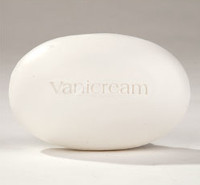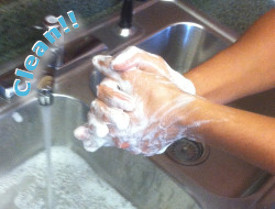 With colder temperatures officially here, many of us are beginning to spend more time indoors. While during these colder fall and winter months, indoor air quality can become more of a concern, what many of us will focus on is avoiding the flu. Did you get your flu shot? Even that is no guarantee. Avoiding the flu is often easier said than done, but rather than spending money on chemical disinfectants or hand sanitizers and antimicrobial soaps that may contain triclosan, I want to focus on one important and simple way to go about fighting the flu.
With colder temperatures officially here, many of us are beginning to spend more time indoors. While during these colder fall and winter months, indoor air quality can become more of a concern, what many of us will focus on is avoiding the flu. Did you get your flu shot? Even that is no guarantee. Avoiding the flu is often easier said than done, but rather than spending money on chemical disinfectants or hand sanitizers and antimicrobial soaps that may contain triclosan, I want to focus on one important and simple way to go about fighting the flu.
Before we start, let’s go over a couple unique things about microbes. First, we’re literally immersed in them. As the planet’s oldest and most basic form of life, bacteria and microbes are actually big part of who we are today. There are literally hundreds of species fungi and bacteria that inhabit different regions of our skin, under our nails and throughout our digestive system. I can hear some people groaning about this, but we have largely symbiotic relationships with these guests. They aid in digestion and are a dynamic part of what makes the human body as resilient as it is. One very interesting thing about microbes though, they are highly adaptable, and when it comes to the flu and harmful bacteria, they quickly evolve to counter what we throw their way.
Wash your hands already! Sounds simple right? Surprisingly many people sell themselves short at this most basic task. Where do we go wrong? Let’s start with the soap. Antimicrobial soaps flood the store shelves. Everywhere you look it’s antimicrobial this and antimicrobial that. The problem is many of the antimicrobial agents are chemical based, and people forget that when it comes to fighting the flu or a cold, you’re combating the most versatile and quickly adapting organisms on the planet. The more exposure germs have to these substances, the more quickly the develop resistance to them. The same is true for antibiotics, and recent stories about drug resistant bacteria  only highlight this very real and growing problem. It is a tit for tat sort of game, and the more we use our antimicrobial agents, the more quickly microbes adapt to them. What is the alternative? Good ole soap and water.
only highlight this very real and growing problem. It is a tit for tat sort of game, and the more we use our antimicrobial agents, the more quickly microbes adapt to them. What is the alternative? Good ole soap and water.
Soap is a surfactant which primarily works to break down surface tension between water and other solids or liquids. Think of soap as a lubricant that when used, allows dirt, grime and microbes to lose their grip on your skin. Soap doesn’t have to be laced with special chemicals or fragrances. It simple needs to do its most basic job, which is to loosen things attached to your skin, allow them to attach to water molecules and flow merrily down the drain.
In addition to the soap, there are two other things that make washing your hands effective – heat and agitation. Heat and agitation (rubbing your hands together, working up a soapy lather) aid the process of dislodging debris, and though simple, both are necessary. Heat transfer is the process by which dirt, debris, and microbes are lifted from a surface. This is the same concept that is behind the sanitizing power of steam cleaners. Agitation effectively combines the soap, water and warmth so, When you combine all three things, ta-da! You’ve effectively washed your hands, and it didn’t take any special antimicrobial soap.
 The last two things to keep in mind when it comes to washing your hands are length of time and frequency. A good rule is sing ‘Happy Birthday’ to yourself twice. If you do it aloud you may either get unexpected birthday gifts or some coworkers may question your sanity. It’s really a 50-50 shot here. The reason you sing Happy Birthday twice is that this amount of time is generally long enough to effectively remove germs, dirt and debris from your hands and nails.
The last two things to keep in mind when it comes to washing your hands are length of time and frequency. A good rule is sing ‘Happy Birthday’ to yourself twice. If you do it aloud you may either get unexpected birthday gifts or some coworkers may question your sanity. It’s really a 50-50 shot here. The reason you sing Happy Birthday twice is that this amount of time is generally long enough to effectively remove germs, dirt and debris from your hands and nails.
Finally, like a Chicago voter, early and often is the best time to wash. Most people don’t think about it but we literally touch our faces hundreds of times each day. Throw in the hundreds or thousands or other things you touch each day, and you have the potential to come in contact with a lot of nasty bugs.
And what if you’re not close to a sink, soap and water? This is what hand sanitizers were originally designed for. I’ve seen hand sanitizer often placed by the bathroom or kitchen sink, but if you’re there, just wash your hands already! The best types of hand sanitizers to stick with are those that use simple alcohol to disinfect. Alcohol is effective, quickly evaporates and doesn’t pose any potential risks that seem to be popping up regarding the use of triclosan (endocrine function disruption in frogs, the possible weakening of muscle contraction, or the association with the diagnosis of allergies and hay fever). You don’t need a great deal of it, and if my past experience is any indicator, using a lot of alcohol-based hand sanitizer right before a staff meeting might get a coworker or two wondering if you spent way too much time carousing last night.
So remember, it doesn’t take anything special to build a great first line of defense against the flu virus. Fighting the flu can be as easy as washing your hands… correctly. To borrow from a childhood movie, wash Daniel-san, and wash well.
